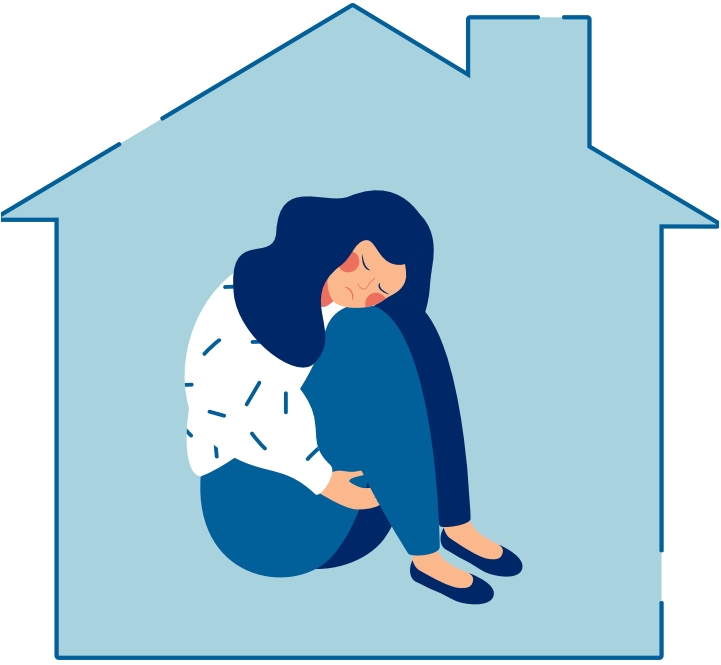
A child’s diagnosis can lead to new awareness for mom
In the 1940s, it was believed that women could not be on the autism spectrum.
In the 1980s, the ratio of men to women on the spectrum was 15:1. By 2015, that ratio was revised to 3:1, indicating behavioral science has progressively increased its ability to understand and detect how autism is expressed by women.
Even if you feel you may know the basics of autism, chances are these are traditional autism stereotypes, which are behaviors more typically expressed by men on the spectrum. Women have culturally higher expectations of socialization, and those expectations carry through to autistic women. They are, as a group, more motivated to study and mimic social behaviors. Many women do “fake it ‘til they make it,” but this is often at a cost. Women are often not diagnosed with autism until later in life and are likely to initially be diagnosed with mental health conditions such as depression, obsessive-compulsive disorder or bipolar disorder, instead of autism, which can share many of the same behavioral concerns.
In the workplace or in social groups, high-functioning women on the spectrum tend to mask their autistic behaviors. Masking is like donning a superhero costume, except the costume is that of a neurotypical (non-autistic) person. Stimming, or self-stimulating behaviors, can alarm others, but can be incredibly soothing to someone who is autistic. Women often adopt non-obtrusive stimming behaviors, or use the privacy of a bathroom to engage in more noticeable stimming like hand flapping.
Another common characteristic of those on the spectrum is an autistic meltdown. In children, these are often indistinguishable by the casual observer from tantrums, but they vary, both in intensity and longevity, as well as the ability to move past the meltdown. Adults who have meltdowns in public places sometimes have police involvement, while females on the spectrum often hold their masks rigidly in place until they reach the privacy of their own home to melt down. These meltdowns may be expressed like a tantrum, but may also involve weeping or sobbing, intensely and for long periods of time.
The ability to diagnose children on the autism spectrum has become more widespread, and often once a child is diagnosed a mother will realize she is also on the spectrum. Because of the gender differences in autistic expression, it may take even longer to realize this if the autistic child is male.
Unfortunately, for as much support as children with autism receive, this often ends upon their entry into adulthood. One resource in the Springfield area is The Adult Autism Group (TAAG), which meets every third Tuesday of the month from 6:30-8 p.m. at the Memorial Center for Learning and Innovation at 228 W. Miller, Springfield. This group allows adults with autism to share experiences, as well as learning skills.
TAAG board member Tonjia Ritchie explained that autistic people “have a harder time dealing with the world because of their sensory issues and their inability to catch the unwritten rules of society.”
Not only do mothers with autism deal with issues stemming from their own autism, but they may also have a child (or children) on the spectrum. Add in the stress of functioning like a neurotypical person in a workplace, plus all the responsibilities of a household, and it is no wonder autistic women are often diagnosed with additional mental health disorders in a society that does not offer much support to mothers or autistic adults.
Dana Affrunti, a local mom with autism who has three children and a fulltime job, says the hardest thing for her is the sensory sensitivities and overload. “I think challenges for women on the spectrum who are also mothers are the same challenges for women who don’t identify on the spectrum, but those challenges are perhaps more intense or significant. When you’re raising young children especially, life can become very, very isolating,” she said. Affrunti described the Springfield-area mom and baby groups as a life-saver for her.
If you suspect you may be on the autism spectrum, listening to podcasts and informational videos specifically from women who are autistic can be useful to understand how autism presents itself in women. Helpful sources also include websites such as www.musingsofanaspie.com or YouTube bloggers such as Yo Samdy Sam. Whether or not you pursue a formal diagnosis, getting in touch with either a real-life or virtual support group may provide important connections.
Springfield resident Carey Smith is a 46-year-old woman with an 8-year-old son on the spectrum who recently realized how much more her life makes sense when viewed through the lens of autism.